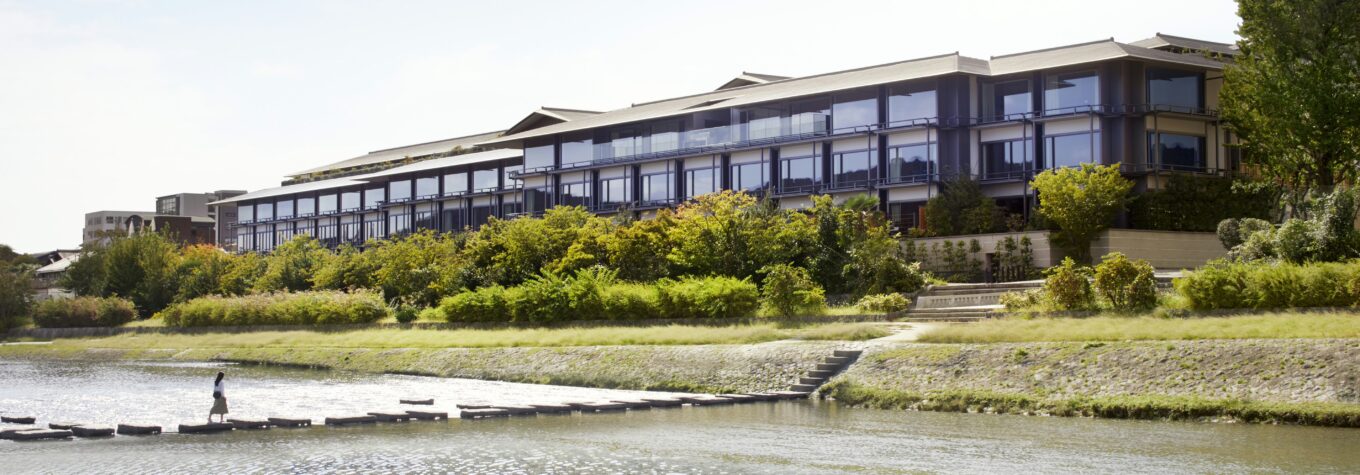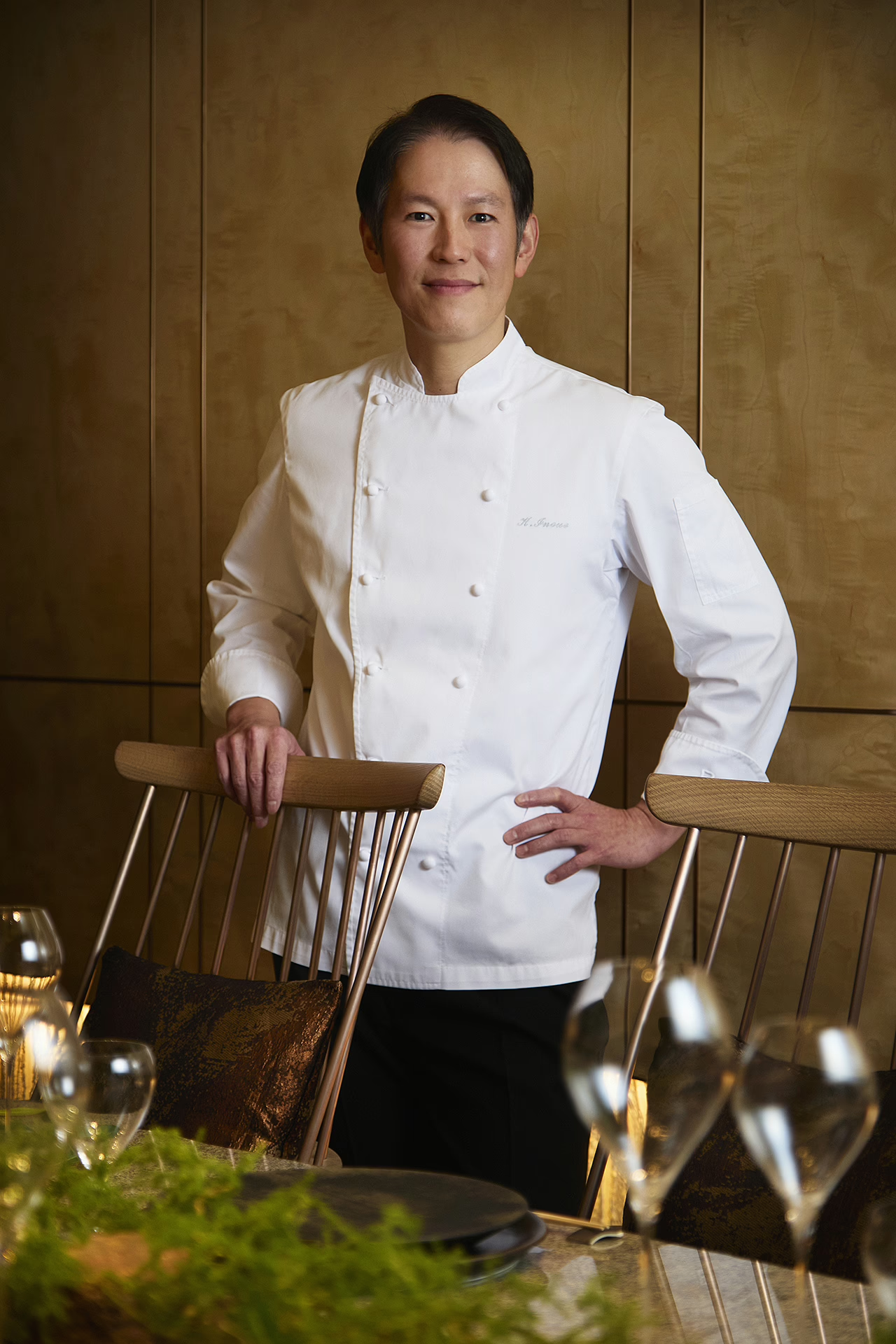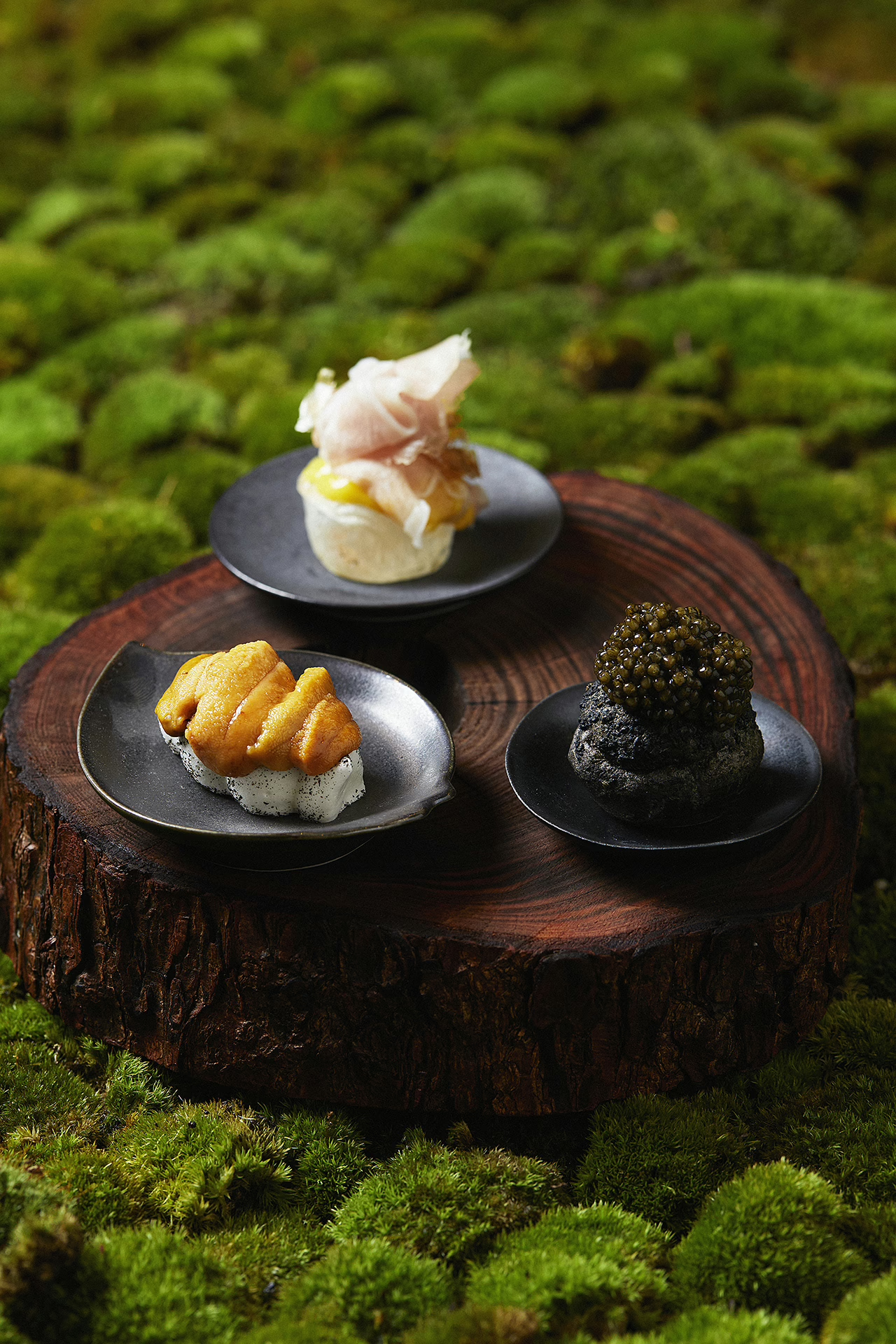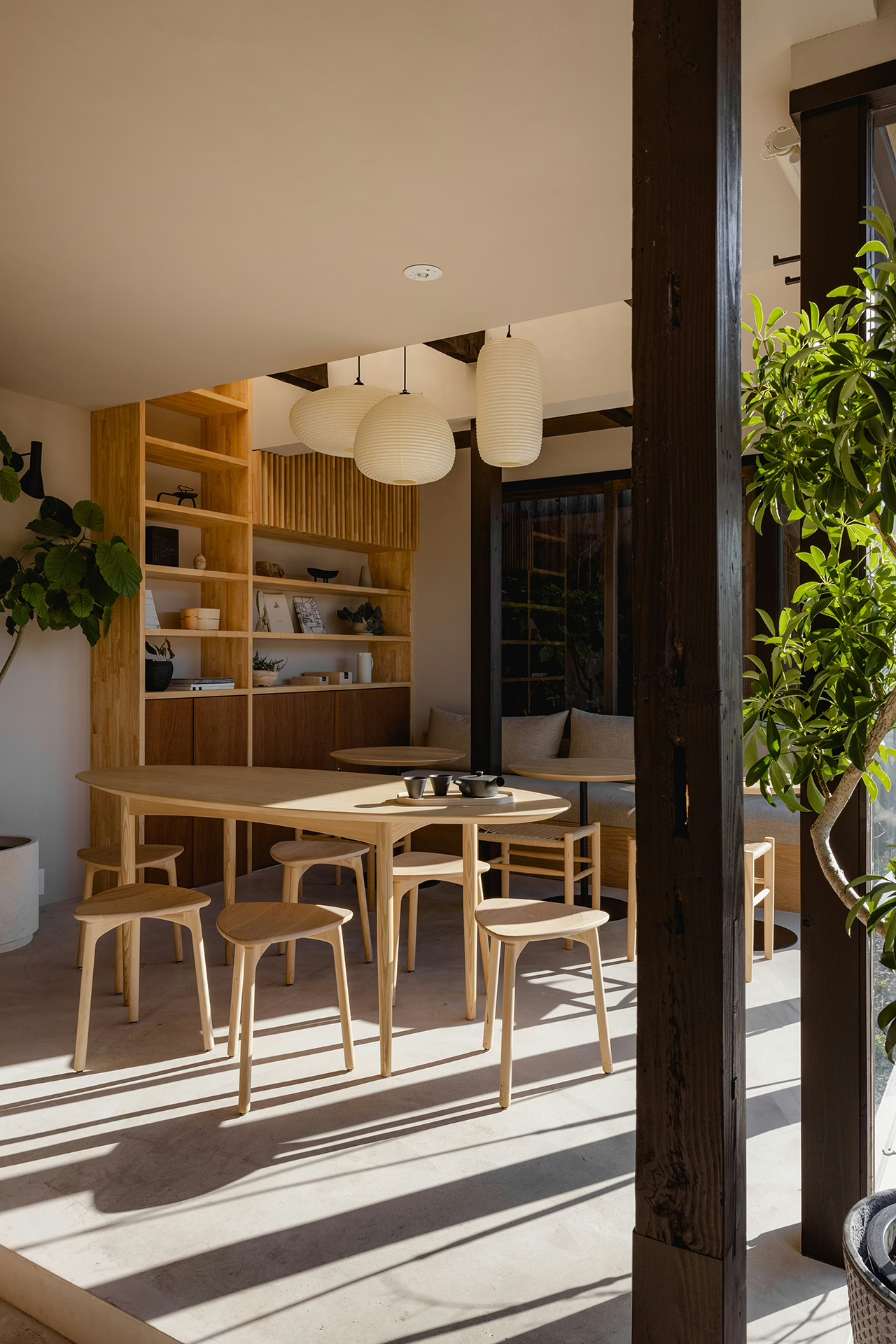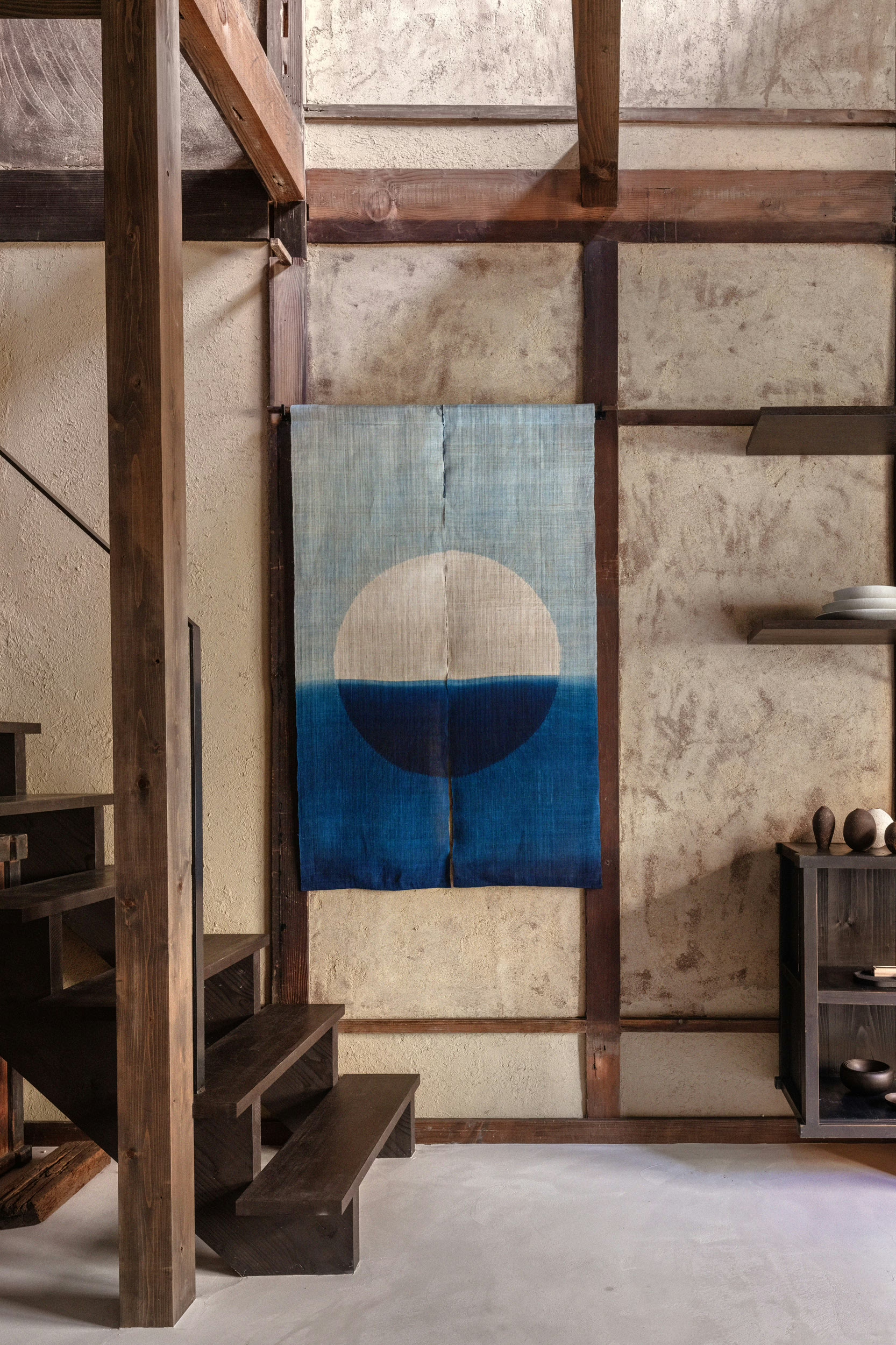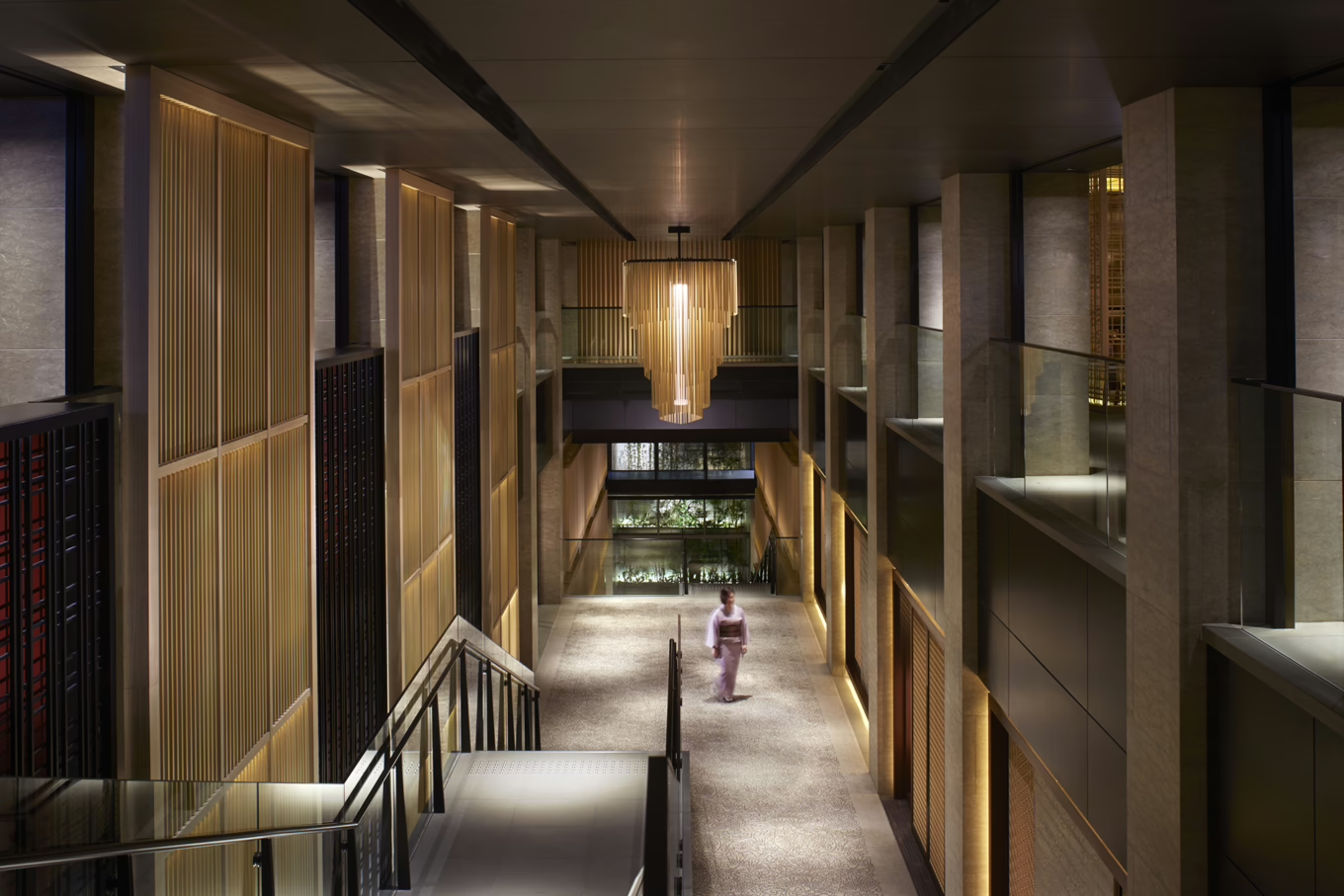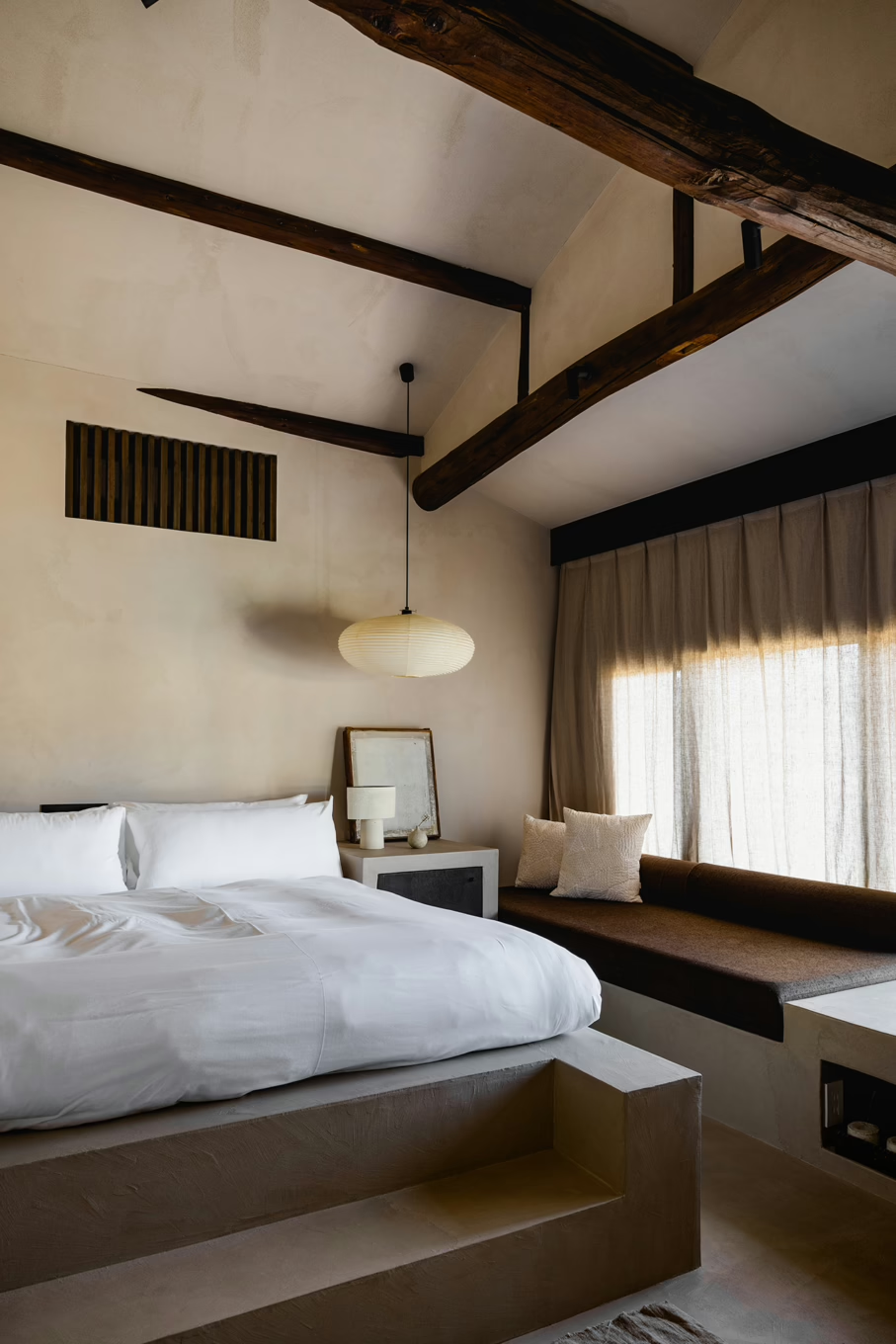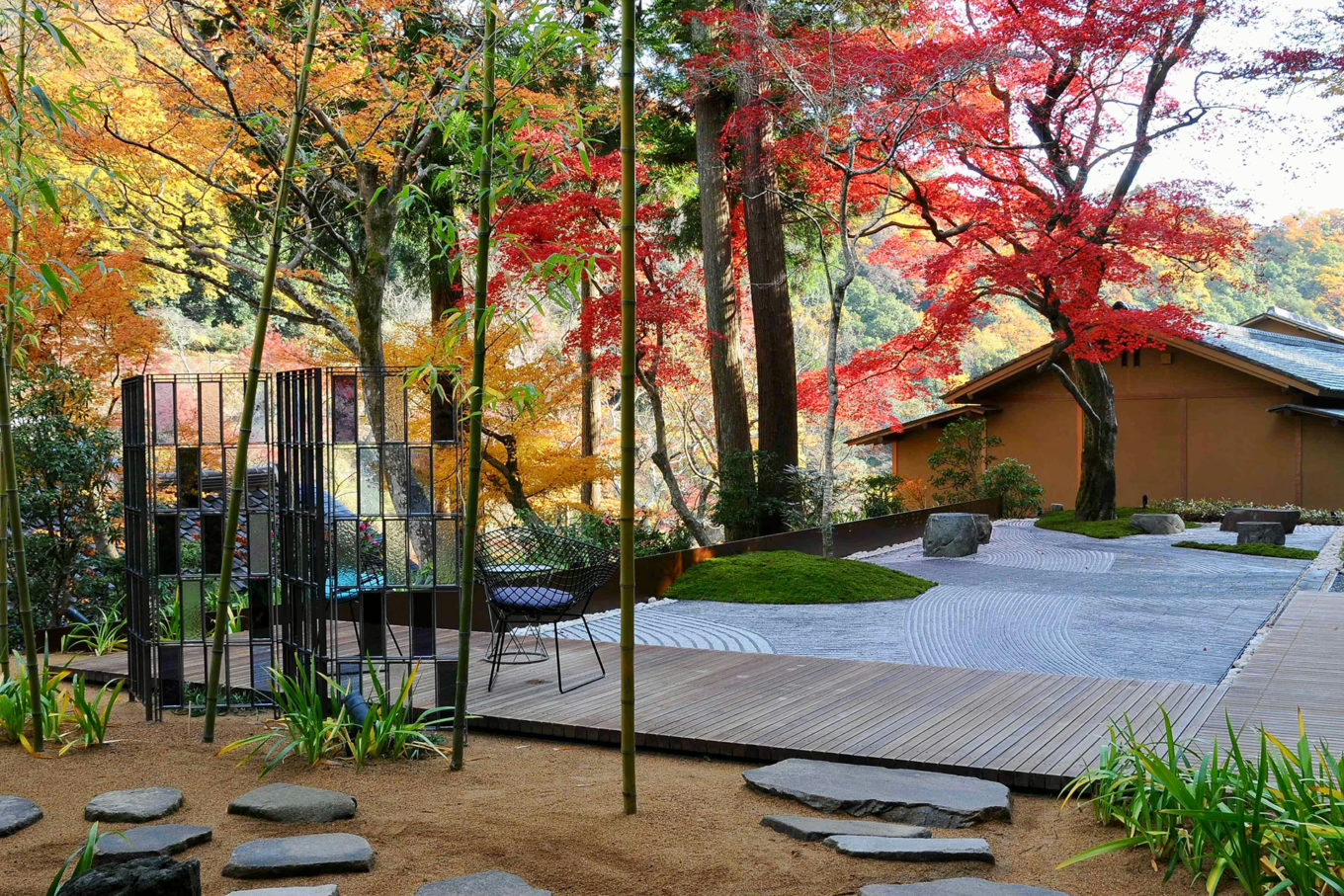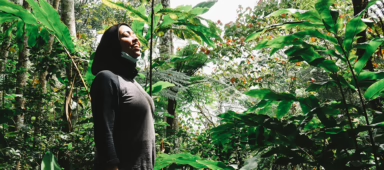Savouring the true essence of Japan’s former imperial capital requires a change of pace – surrender your travel checklist and let serendipity guide the way
The sun was starting to peep through the fluffy cumulus clouds when I put on my helmet and tucked my toddler into the back of a mamachari – a type of bicycle equipped with a child seat, so named because it’s used by mothers all over Japan. It was 7am and our family of three was setting off on a relaxed ride along the Kamogawa, a tranquil river running through Kyoto that was once the city’s main source of drinking water. Today, Kamogawa is a social hub, with the wide paths along the riverbanks designed for easy strolls, leisurely cycles and impromptu picnics.
Guided by the affable Gerry from The Ritz-Carlton Kyoto, we pedalled past locals doing their morning workout as well as smartly uniformed children off to school. A short 15-minute ride later, we stopped at a torii – a gate standing tall among the tiny houses – signalling we’ve arrived at Shimogamo Jinja.

A Unesco World Heritage Site, Shimogamo Jinja dates back to the 7th century, making it one of the oldest Shintō shrines in Japan. We parked our bicycles and walked through Tadasu-no-Mori, a leaf-strewn path lined with 600-year-old trees towering above us.
At this hour of the morning, the sunlight filtering through the leaves creates a serene, almost sacred mood, a phenomenon that the Japanese call komorebi. The quiet atmosphere was broken by my toddler’s dash to a shrine that, intriguingly, features a rugby ball. Much to my husband’s delight – he’s a hardcore rugby fan – it turned out to be a shrine dedicated to the sport, so he grabbed a few omamori (lucky charms in decorative pouches) to take home.
For my benefit, we stopped by Kawai-jinja, another subsidiary shrine frequented by women praying to the goddess of health and beauty. We spent an hour in Shimogamo Jinja, happy to be one of the handful of visitors experiencing it the way it was intended: taking our time without having to fight for space.
Think of Kyoto, and the shimmering golden Kinkaku-ji, the soaring wooden Kiyomizu-dera and the crimson torii passage of Fushimi Inari Taisha immediately come to mind. Along with them are images of crowds of kimono-clad tourists wielding selfie sticks.
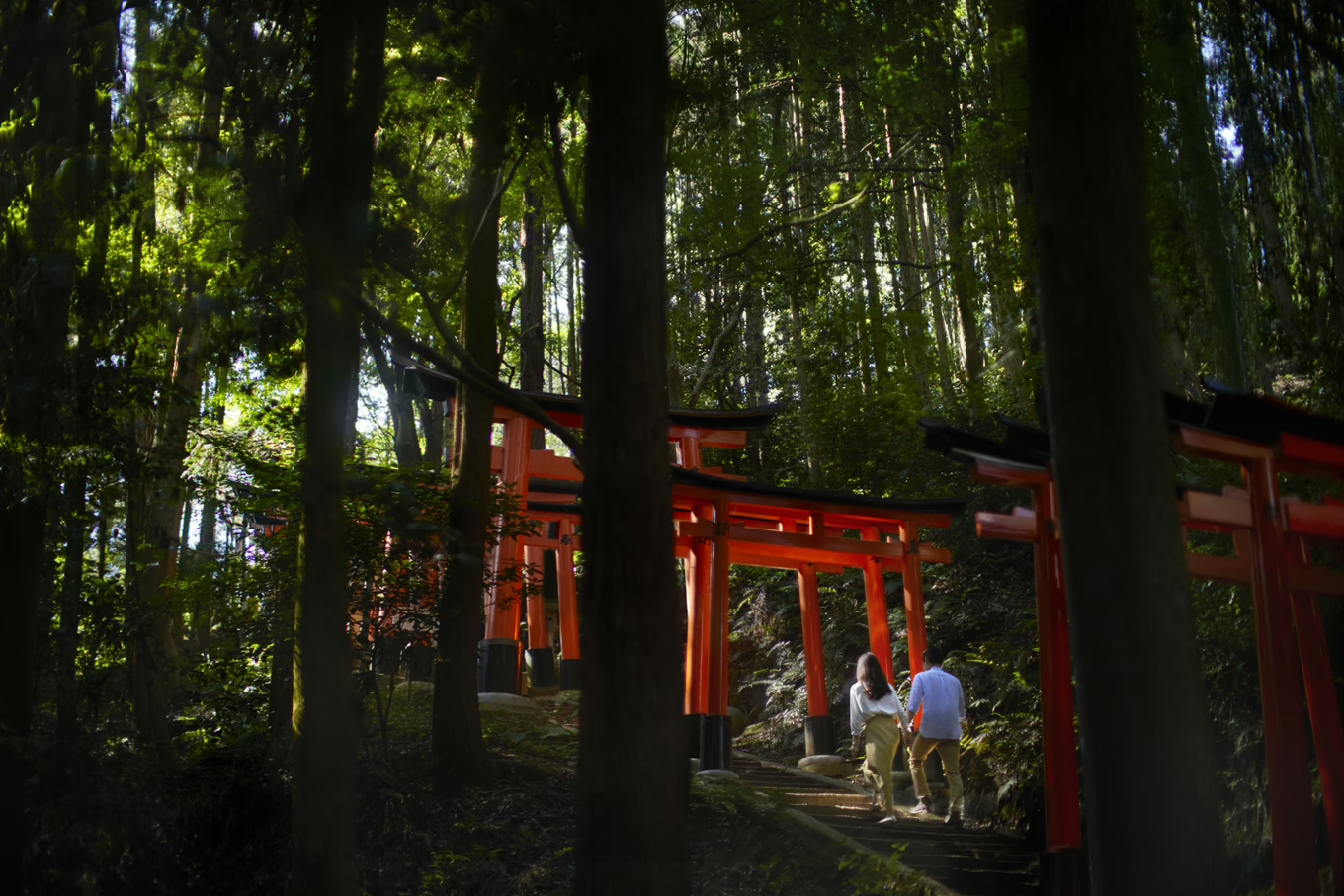
Last year, Kyoto welcomed over 10 million foreign travellers, which is 25 percent more than the total number of international tourist arrivals in Australia. Overtourism is a real challenge in Kyoto, so embracing a slower way of travelling is more crucial than ever. Visiting temples at sunrise offers a relaxed way to experience these revered sites, but if you’re looking to escape the throng altogether, forgo the bucket-list and head to lesser-trodden paths. With over 1,600 temples and 400 shrines in Kyoto, there’s plenty to explore far from the madding crowds.
SLOW TRAVEL ISN’T ONLY ABOUT DIALLING DOWN the pace, but also about creating a mindful, more thoughtful itinerary that immerses you in the destination. As the ancient capital of Japan, Kyoto is defined by its culture of craftsmanship – almost every corner has a story to tell.
One spot to take this all in is Kaikado, established in 1875 and the oldest tea caddy maker in Japan. Even if you’re not an avid tea drinker and have no practical need for the beautifully handcrafted vessels, their outpost, Kaikado Café, offers a peek into Japanese kogei (crafts).
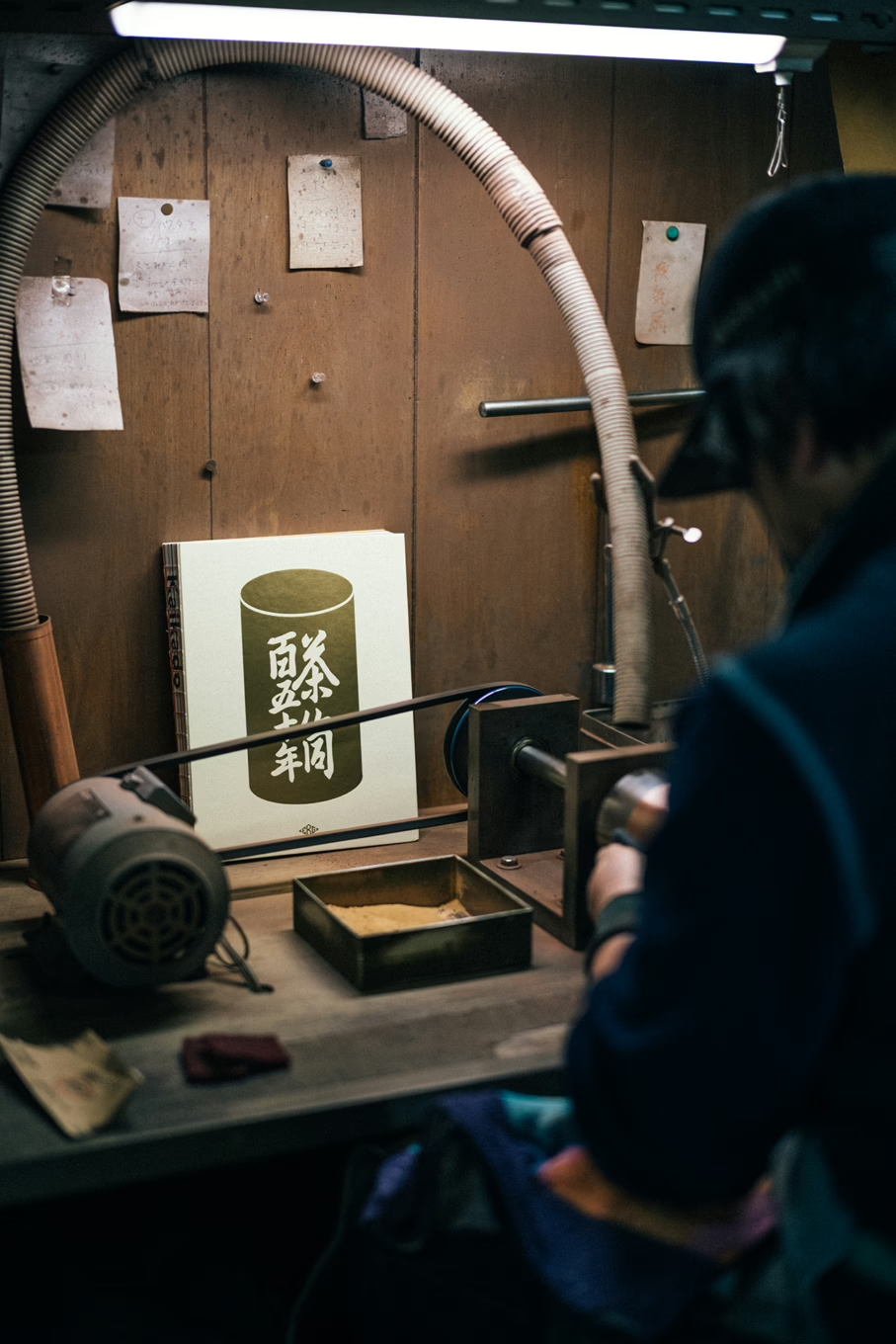
Housed in a century-old building, it’s the kind of place where you can see – and feel – the power of the human touch. “We try to serve a crafts-minded menu. With both tea and crafts, you need a slower experience to truly understand it – not through words but through feeling,” says Takahiro Yagi, a sixth-generation metal artisan at Kaikado. “For us, tea is a ‘silent drink’. We have to lean into the intimacy of the experience and be in the present.”
From yuba to matcha, Kyoto has distinct food and drink specialities. Myriad kaiseki (multi-course meal) restaurants offer a window into the city’s culinary riches but nowhere is as detailed and meticulous as Chef’s Table by Katsuhito Inoue.
Drawing inspiration from shichijuni-ko – the traditional Japanese calendar of 72 micro seasons, each lasting about five days – the restaurant allows guests to taste the subtle transitions of each fleeting period.
I entered a small room anchored by a communal table decorated by an artistic tableau of twigs, leaves and moss, an arrangement that looked as aesthetically pleasing as the rock gardens of Ryoan-ji. Chef Inoue was smiling at the counter at the end of the room, and we were joined at the table by a Japanese couple celebrating their 50th wedding anniversary.
There were only four of us diners and around the same number of chefs – giving a sense of how many hands would create this masterful meal. There was no menu but rather a procession of beautifully plated dishes that signified a taste of Kyoto on that very day. It was here I tried the purest and freshest takenoko (bamboo shoot), a flavour so intense that every other version I had bvefore paled in comparison.
“One of the micro seasons is takenoko shozu, referring to the brief moment when bamboo shoots begin to emerge from the ground,” explains Inoue-san. “We fill bamboo tubes with bread dough and bake them, allowing the bamboo aroma to infuse the bread.”
Inoue-san is also guided by the philosophy of shimatusu-no-kokoro, the idea of being grateful to nature and using every part of the ingredient. Inspired by the Basque dessert cuajada, Inoue-san also creates a dish using bamboo containers. “We gently set milk and rennet in bamboo containers, solidifying them slowly over candlelight. These are accompanied by freshly harvested vegetables from Kyoto, offering a sensory experience that reflects the breath of nature.”
WHERE YOU CHECK IN SHAPES YOUR PERSPECTIVE OF a place. During my week in Kyoto, I stayed two nights at Maana Kiyomizu, a row of four former teahouse buildings that have been carefully renovated.
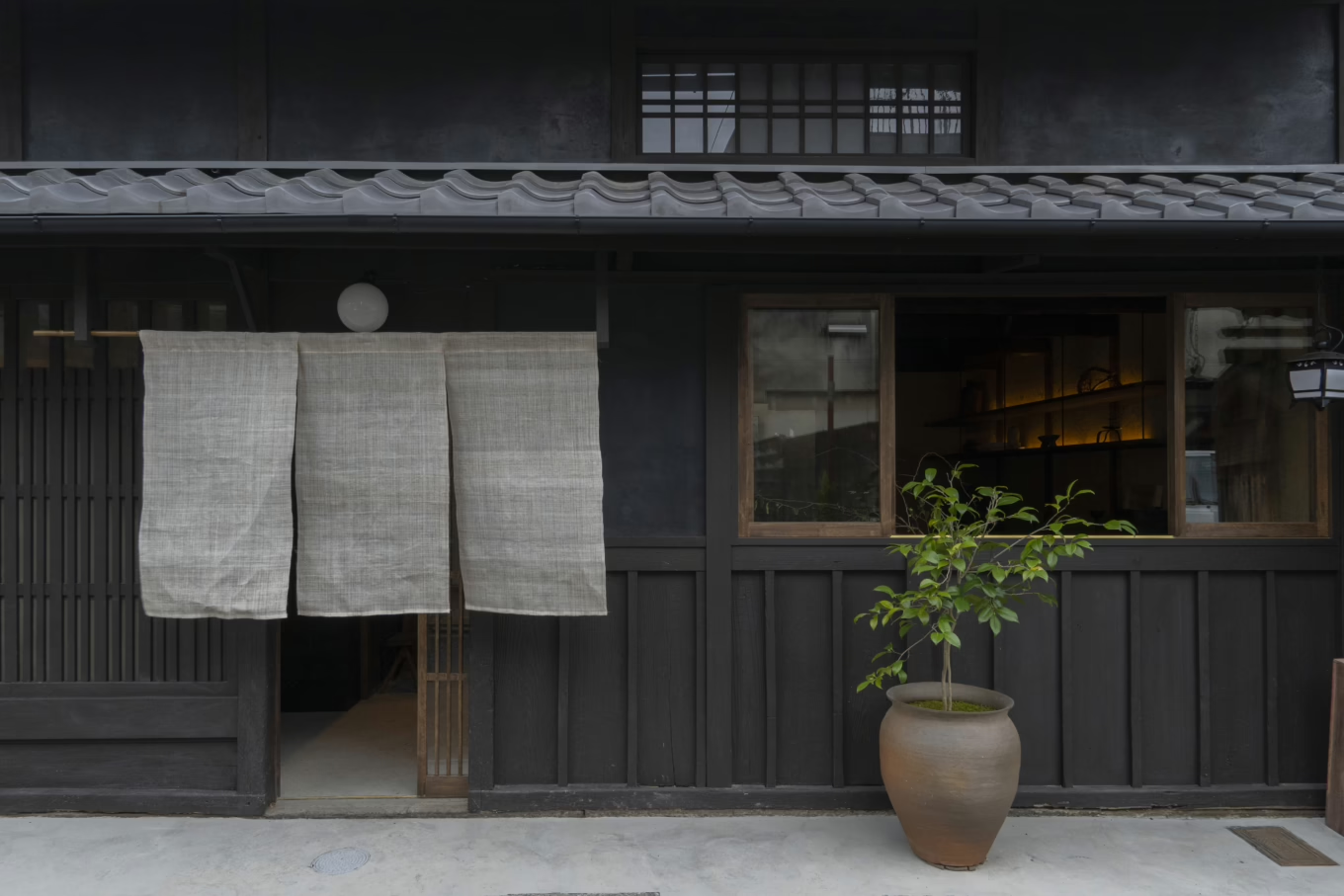
When Maana Homes co-founders Irene Chang and Hana Tsukamoto first found them, they were in a severe state of disrepair. Together with Shigenori Uoya Architects and Associates and Ikei Takeshi Architects, they breathed new life into these forgotten spaces, resulting in a compound housing three self-contained suites, a café and a homeware shop.
“Maana’s intention had always been to encourage people to slow down and reconnect with themselves and their environment. Our homes were designed as sources of inspiration for everyday life – spaces filled with soulful objects, rituals and lessons we’ve gathered in Kyoto,” says Chang.
One afternoon, I ventured to Maana Atelier, a crafts workshop space housed in a striking renovated machiya (townhouse) in Nishijin, a district of Kyoto known for textile craft. I signed up for the Earthen Wall workshop, run in partnership with the Kyoto Research Institute, an independent group that conducts interdisciplinary research on heritage Japanese materials.
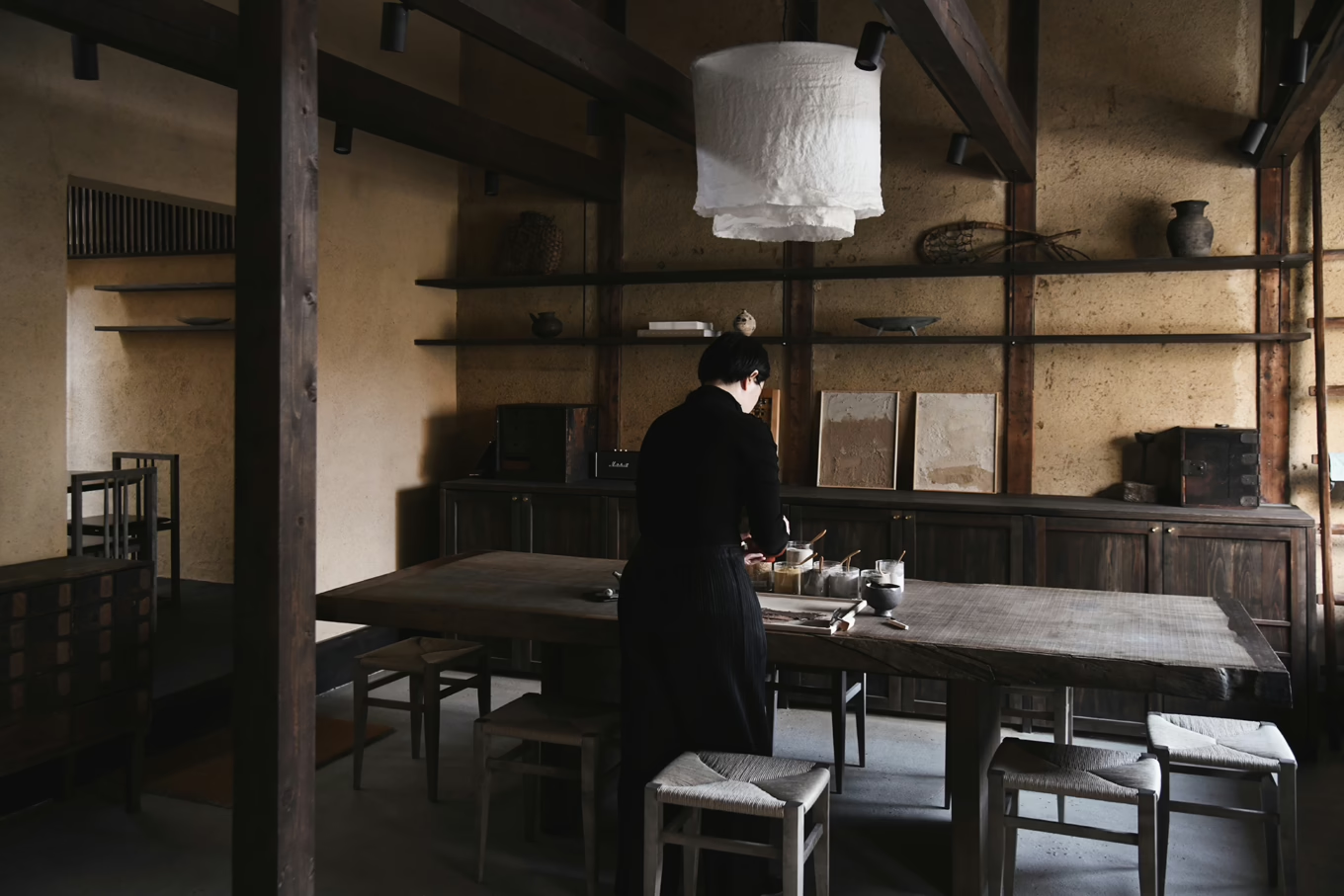
There, I learned about the art of sakan, a 1,300-year-old technique for plastering walls using natural materials such as sand, clay and soil. It was designated a Unesco Intangible Cultural Heritage in 2020. It was an afternoon of mixing natural pigment with water, putting in some sand and straw then decorating the canvases – a brief insight into the painstaking work and artistry required of sakan artisans.
With my original creation in hand, I wandered around the area, catching the last of the sakura blooms. I was overcome by a melancholy feeling, thinking about how this once-thriving district of kimono-makers had been whittled down to just a few surviving shops.
We all travel to see a different view of the world, and so each considered step helps ensure unique traditions live on – even in the time of AI. I continued walking leisurely in the general direction of my hotel, and it was among the most pleasant hours I spent in Kyoto.
Slow travel is not about the length of time you spend in the place; it’s an approach. It’s giving yourself the time to breathe and create space for serendipitous finds. As Chang says, “Slow travel is about presence, not productivity. Choose one area, take your time and let yourself get a little lost.”
Where to stay in Kyoto
3 thoughtfully crafted stays with a distinct point of view
The Ritz-Carlton, Kyoto Located on a site favoured by Japanese nobility since the 17th century, this is the city’s first big-name luxury hotel. This ryokan-style property at the banks of the Kamo River is all about intimacy – there are only seven floors, 134 rooms and over 100 pieces of art. More than just a room for the night, the hotel offers insider experiences like Kyo-Karakami paper craft workshops and cycling excursions to lesser-trodden paths. ritzcarlton.com
Maana Homes Want to live like a Kyoto local? Maana Homes offers the experience of staying in a sensitively restored machiya. Minimalist in style and designed for quiet reflection, these standalone machiya homes showcase a creative’s perspective of Kyoto. Find like-minded travellers at their satellite location, Maana Atelier, which offers craft workshops, a larger retail space and culinary events. maanahomes.com
Hoshinoya Kyoto Set in the lush Takagamine mountainside near Arashiyama, the property transports you to the serene period of the Heian era. The arrival experience is unparalleled – you board a boat on Togetsukyo Bridge and it winds through the river until you reach this luxury ryokan. Housed in a century-old structure, spend the day gazing into the picturesque expanse of forest and river – best enjoyed while savouring their epic Japanese breakfast spread. hoshinoresorts.com
Malaysia Airlines flies between Kuala Lumpur and Osaka 7x weekly. Kyoto is 15–30 minutes away by train.
